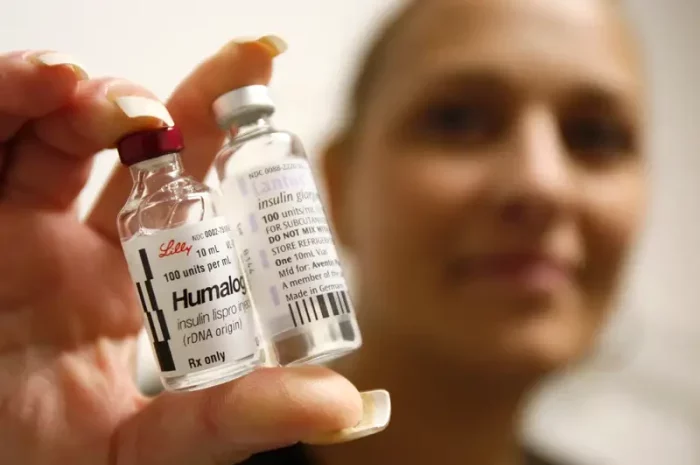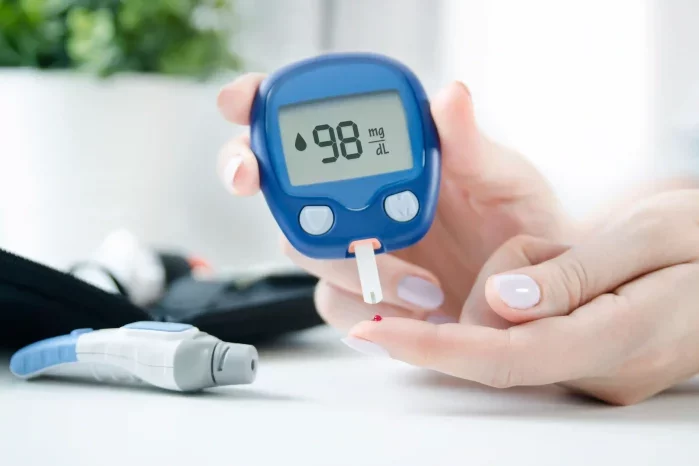Insulin resistance is a condition in which cells in the body become less sensitive to the hormone insulin, leading to a range of metabolic disturbances. This state can lead to the development of type 2 diabetes, cardiovascular diseases, and other health complications if left unmanaged. Understanding insulin resistance, how it develops, and how it can be diagnosed is crucial for preventing and managing these conditions.
What is Insulin Resistance?
Insulin is a hormone produced by the pancreas that allows cells in the body to absorb glucose from the bloodstream and use it for energy. In insulin resistance, the cells in the liver, muscles, and fat become less responsive to insulin. As a result, the pancreas produces more insulin to compensate, leading to hyperinsulinemia. Over time, this compensatory mechanism can fail, resulting in elevated blood glucose levels and the onset of type 2 diabetes.
Pathophysiology of Insulin Resistance
Insulin resistance involves complex interactions between genetic, environmental, and lifestyle factors. Key mechanisms include:
Genetic Predisposition: Certain genetic factors can predispose individuals to insulin resistance. For instance, mutations in insulin receptor genes or signaling pathways can impair insulin action.
Inflammation: Chronic low-grade inflammation, often associated with obesity, can interfere with insulin signaling pathways. Adipose tissue in obese individuals secretes pro-inflammatory cytokines, such as TNF-alpha and IL-6, which contribute to insulin resistance.
Lipid Accumulation: Excessive accumulation of lipids, particularly in liver and muscle tissues, can lead to lipotoxicity. This condition impairs insulin signaling and glucose metabolism.
Mitochondrial Dysfunction: Defects in mitochondrial function can impair energy production and contribute to insulin resistance. Reduced mitochondrial activity can lead to the accumulation of lipid intermediates that interfere with insulin signaling.
Endoplasmic Reticulum Stress: The endoplasmic reticulum (ER) is involved in protein folding and secretion. ER stress can disrupt insulin signaling by activating stress response pathways that inhibit insulin receptor activity.
Clinical Implications of Insulin Resistance
Insulin resistance is associated with various clinical conditions, including:
Type 2 Diabetes: The most well-known consequence of insulin resistance is type 2 diabetes. Chronic insulin resistance leads to beta-cell dysfunction and the eventual inability to produce sufficient insulin to maintain normal blood glucose levels.
Cardiovascular Disease: Insulin resistance is a significant risk factor for cardiovascular diseases. It contributes to atherosclerosis, hypertension, and dyslipidemia, which are major cardiovascular risk factors.
Non-Alcoholic Fatty Liver Disease (NAFLD): Insulin resistance is closely linked to NAFLD, a condition characterized by the accumulation of fat in the liver. NAFLD can progress to non-alcoholic steatohepatitis (NASH), cirrhosis, and liver cancer.
Polycystic Ovary Syndrome (PCOS): Insulin resistance is commonly observed in women with PCOS, a hormonal disorder characterized by irregular menstrual cycles, hyperandrogenism, and ovarian cysts.
Metabolic Syndrome: This syndrome includes a cluster of conditions—such as abdominal obesity, hypertension, hyperglycemia, and dyslipidemia—that increase the risk of cardiovascular disease and type 2 diabetes. Insulin resistance is a central feature of metabolic syndrome.
Diagnosis of Insulin Resistance
Diagnosing insulin resistance can be challenging because it often presents without overt symptoms. Several methods can be used to assess insulin resistance, ranging from clinical assessments to laboratory tests.
Clinical Assessments
Anthropometric Measurements: Body mass index (BMI), waist circumference, and waist-to-hip ratio are simple, non-invasive measures that can provide insights into an individual’s risk of insulin resistance. Central obesity (excess abdominal fat) is particularly associated with insulin resistance.
Physical Examination: Acanthosis nigricans, a condition characterized by dark, velvety patches of skin, particularly in body folds, can be a clinical marker of insulin resistance.
Laboratory Tests
Fasting Blood Glucose and Insulin Levels: Measuring fasting blood glucose and insulin levels can provide an initial indication of insulin resistance. Elevated fasting insulin levels suggest compensatory hyperinsulinemia due to insulin resistance.
Oral Glucose Tolerance Test (OGTT): The OGTT assesses the body’s response to a glucose load. Blood glucose and insulin levels are measured at baseline and at intervals after consuming a glucose solution. This test can reveal impairments in glucose metabolism indicative of insulin resistance.
Insulin Tolerance Test (ITT): The ITT involves administering insulin and measuring blood glucose levels at intervals. The rate of glucose disappearance provides an index of insulin sensitivity. This test is more invasive and less commonly used in clinical practice.
Hyperinsulinemic-Euglycemic Clamp: This is considered the gold standard for measuring insulin sensitivity. It involves infusing insulin at a constant rate while maintaining euglycemia through a variable glucose infusion. The rate of glucose infusion needed to maintain euglycemia reflects insulin sensitivity. However, this test is complex and primarily used in research settings.
Biomarkers and Advanced Testing
Adiponectin and Leptin Levels: Adiponectin is an insulin-sensitizing hormone secreted by adipose tissue. Low levels of adiponectin are associated with insulin resistance. Leptin, another adipose-derived hormone, is often elevated in obesity and insulin resistance.
Inflammatory Markers: Elevated levels of inflammatory markers, such as C-reactive protein (CRP), TNF-alpha, and IL-6, are often found in individuals with insulin resistance.
Lipid Profiles: Dyslipidemia, characterized by elevated triglycerides, low HDL cholesterol, and small, dense LDL particles, is commonly associated with insulin resistance.
Liver Enzymes: Elevated levels of liver enzymes, such as alanine aminotransferase (ALT) and aspartate aminotransferase (AST), can indicate NAFLD, which is often linked to insulin resistance.
Imaging Techniques
Magnetic Resonance Imaging (MRI): MRI can be used to assess fat distribution and quantify visceral fat, which is closely linked to insulin resistance.
Computed Tomography (CT): CT scans can also measure visceral fat and liver fat content, providing valuable information about the risk of insulin resistance.
Ultrasound: This non-invasive technique can detect fatty liver and measure abdominal fat thickness, aiding in the assessment of insulin resistance.
Management of Insulin Resistance
Managing insulin resistance involves lifestyle modifications, pharmacological interventions, and regular monitoring. The goal is to improve insulin sensitivity, reduce the risk of complications, and enhance overall metabolic health.
Lifestyle Modifications
Dietary Changes: A balanced diet rich in whole grains, fruits, vegetables, lean proteins, and healthy fats can improve insulin sensitivity. Reducing the intake of refined carbohydrates, sugary beverages, and trans fats is crucial. Some dietary approaches include:
Mediterranean Diet: Emphasizes fruits, vegetables, whole grains, nuts, and olive oil, and has been shown to improve insulin sensitivity.
Low-Carbohydrate Diets: Can be effective for weight loss and improving insulin sensitivity.
High-Fiber Diets: Soluble fiber slows glucose absorption, helping to regulate blood sugar levels.
Physical Activity: Regular physical activity is one of the most effective ways to improve insulin sensitivity. Both aerobic exercise (such as walking, running, and swimming) and resistance training (such as weightlifting) have beneficial effects. Aim for at least 150 minutes of moderate-intensity exercise per week.
Weight Management: Losing even a modest amount of weight (5-10% of body weight) can significantly improve insulin sensitivity. Combining dietary changes and physical activity is the most effective approach to weight loss.
Stress Management: Chronic stress can contribute to insulin resistance. Techniques such as mindfulness, meditation, yoga, and adequate sleep are essential for managing stress.
Pharmacological Interventions
Metformin: This medication is often the first-line treatment for type 2 diabetes and insulin resistance. It works by reducing hepatic glucose production and improving insulin sensitivity in peripheral tissues.
Thiazolidinediones (TZDs): These medications, such as pioglitazone and rosiglitazone, enhance insulin sensitivity by activating peroxisome proliferator-activated receptors (PPARs) that regulate glucose and lipid metabolism. However, they can have side effects, including weight gain and fluid retention.
GLP-1 Receptor Agonists: These medications, such as liraglutide and exenatide, enhance insulin secretion, suppress glucagon release, and promote satiety, leading to weight loss and improved insulin sensitivity.
SGLT-2 Inhibitors: These drugs, such as empagliflozin and dapagliflozin, lower blood glucose levels by increasing glucose excretion through the urine. They also have benefits for weight loss and cardiovascular health.
Insulin Sensitizers: Other medications, such as acarbose and miglitol, delay carbohydrate absorption in the gut, reducing postprandial glucose spikes and improving insulin sensitivity.
Monitoring and Follow-Up
Regular monitoring and follow-up are essential for individuals with insulin resistance to track progress and make necessary adjustments to the management plan.
Blood Glucose Monitoring: Regular monitoring of blood glucose levels can help assess the effectiveness of interventions and detect early signs of type 2 diabetes.
HbA1c Testing: Hemoglobin A1c provides an average of blood glucose levels over the past 2-3 months. It is a useful marker for long-term glycemic control.
Lipid Profiles: Regular lipid profile tests can help monitor the effectiveness of dietary and pharmacological interventions on dyslipidemia.
Liver Function Tests: For individuals with NAFLD, regular liver function tests are essential to monitor liver health and the effectiveness of interventions.
Blood Pressure Monitoring: Regular blood pressure checks are important, as hypertension is often associated with insulin resistance and metabolic syndrome.
See also: What Is The Best Weight Loss Diet For Insulin Resistance
Conclusion
Insulin resistance is a complex condition with far-reaching implications for metabolic health. Early diagnosis and effective management are crucial for preventing the progression to type 2 diabetes and other associated conditions. A comprehensive approach, involving lifestyle modifications, pharmacological interventions, and regular monitoring, can significantly improve insulin sensitivity and overall health outcomes.
Healthcare providers play a critical role in identifying individuals at risk of insulin resistance, educating them about the condition, and guiding them through the necessary steps to manage and mitigate its impact. As our understanding of insulin resistance continues to evolve, ongoing research and advancements in medical science will further enhance our ability to diagnose, treat, and ultimately prevent this condition.
Related topics:
Do Beta Blockers Cause Hypoglycemia or Hyperglycemia?

























